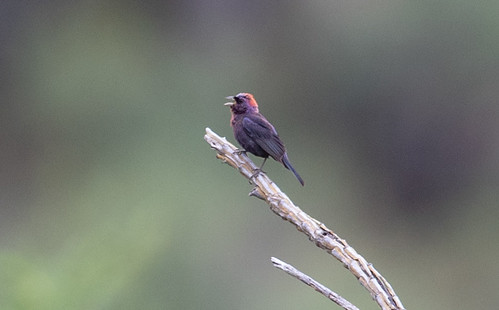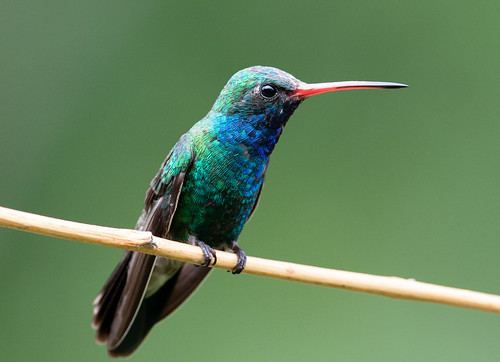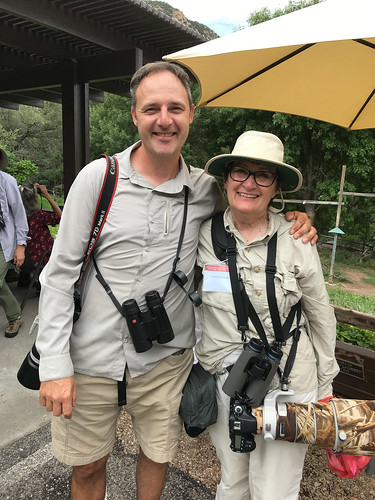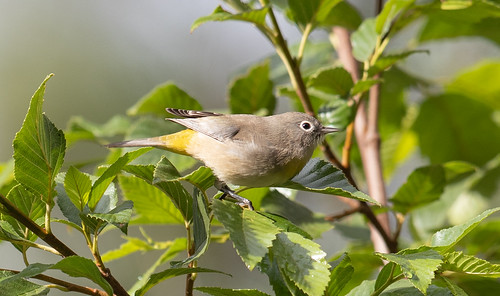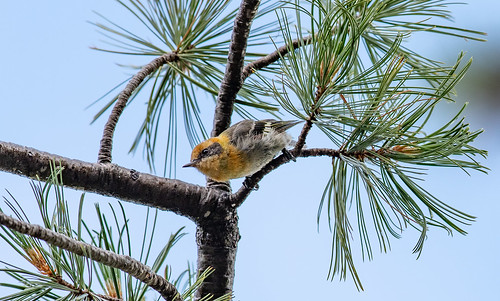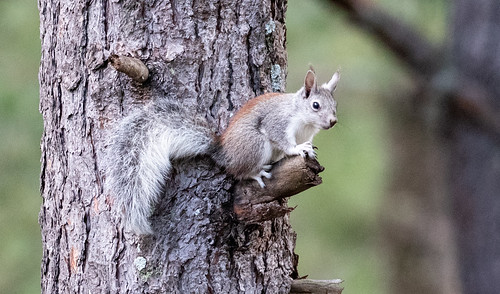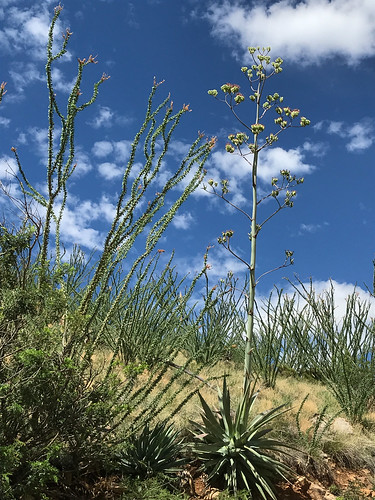In October 2018, I received an email from Luke Safford asking me to be the keynote speaker at the 2019 Southeast Arizona Birding Festival. I was thrilled beyond compare, and for the past ten months I've been floating on high with anticipation. Last week was the actual event, and it was even more wonderful than I'd anticipated.
I arrived in Tucson on Wednesday, August 7, about noon. A birder named Jennie MacFarland picked me up at the airport, and during our drive, she told me a bit about her work with the southwestern population of Yellow-billed Cuckoos—when I ran into a group of three loud cuckoos on our first field trip, I of course sought out Jennie to tell her all about it. Wednesday evening I got to meet lots more people from Tucson and beyond at the social hour, and then went to bed early so I could be up for my morning field trip to Walker Canyon, an infrequently birded area very close to Nogales and the Mexican border.
I was ostensibly a field trip co-leader, but since I live in Minnesota and have birded this area of Arizona only four times before, I was actually just along for color commentary. Our real leader was Tim Helentjaris, who loves birding in out-of-the-way places few other birders check out. We were hoping for a lot of Mexican specialties, and the trip didn’t disappoint. I got my first photos of an Elegant Trogon ever when a female posed from not too terribly far away.
I also got a great look at a Varied Bunting flying by too quickly for me to photograph, and took a few photos of a young Gray Hawk.
Right now Montezuma Quail are busy raising their chicks, making this secretive species even more focused on staying out of sight than they usually are, so we didn’t see any.
I also got a great look at a Varied Bunting flying by too quickly for me to photograph, and took a few photos of a young Gray Hawk.
Right now Montezuma Quail are busy raising their chicks, making this secretive species even more focused on staying out of sight than they usually are, so we didn’t see any.
The next day, Friday, my group headed for the famous Madera Canyon, one of the most popular birding canyons in the state. This time my co-leaders were Robert Mesta and Mollee Brown. We started out trying to get some lowland desert sparrows like Rufous-winged, Black-throated, Cassin’s, and Botteri's Sparrows.
My ears are not what they used to be, but I did manage to hear the Cassin’s and Botteri’s both. Tragically, my photos were at such a distance and the two birds look so similar that I can’t be sure which photos were which. But the four sparrows did all end up listable, and while none came in close, I did get a distant recording of Cassin's.
My ears are not what they used to be, but I did manage to hear the Cassin’s and Botteri’s both. Tragically, my photos were at such a distance and the two birds look so similar that I can’t be sure which photos were which. But the four sparrows did all end up listable, and while none came in close, I did get a distant recording of Cassin's.
A Varied Bunting was more cooperative, singing persistently from an exposed perch. We weren’t very close, but I did get some marginal recordings and photos, which was thrilling because I’ve only seen this gorgeous desert species once before in my life.
When we got up to a picnic ground, we had good views and photo ops of a male trogon.
I got photos of a second male trogon in the trees behind the Santa Rita Lodge feeding station.
That’s also where I got lots of photos of Broad-billed Hummingbirds ...
... and a few photos of one Rivoli’s Hummingbird, which was up until recently called the Magnificent Hummingbird. That species was split into the Talamanca Hummingbird of Central America, which I’ve seen and photographed in Costa Rica, and the Rivoli’s, which I’d seen before but never photographed in Arizona.
While we were birding there, I got a wonderful sighting of another Minnesota birder, my friend John Richardson.
That night we took a field trip back to Madera for some owling, a trip special enough to warrant its own blog post and podcast.
When we got up to a picnic ground, we had good views and photo ops of a male trogon.
I got photos of a second male trogon in the trees behind the Santa Rita Lodge feeding station.
That’s also where I got lots of photos of Broad-billed Hummingbirds ...
... and a few photos of one Rivoli’s Hummingbird, which was up until recently called the Magnificent Hummingbird. That species was split into the Talamanca Hummingbird of Central America, which I’ve seen and photographed in Costa Rica, and the Rivoli’s, which I’d seen before but never photographed in Arizona.
While we were birding there, I got a wonderful sighting of another Minnesota birder, my friend John Richardson.
That night we took a field trip back to Madera for some owling, a trip special enough to warrant its own blog post and podcast.
I didn’t get out birding at all on Saturday, which sounds strange for what is supposed to be a birding festival, but on Saturday I had to give both a morning talk and then the evening keynote at the banquet. The evening's "Fiesta de Aves" featured a mariachi band during the reception, and I got to meet a wonderful young man named Dorian Escalante. I was thrilled later when he was given Tucson Audubon's brand new youth award, named in honor of Bill Thompson III. Dorian's is the first name on the beautiful new plaque.
Sunday was my final field trip, this time led with Gordon Karre, up Mt. Lemmon to the town called Summerhaven, at such an elevation that it’s cool up there even when Tucson is over 100 degrees. We had some excellent warblers—I got photos of Virginia’s, Hermit, and Olive Warblers and Painted Redstarts, and also got quick looks at Red-faced Warbler.
Broad-tailed Hummingbirds dominated at the feeding station we visited.
We also had some very quick looks at what is now called the Blue-throated Mountain-Gem, but I didn't get photos.
Sunday was my final field trip, this time led with Gordon Karre, up Mt. Lemmon to the town called Summerhaven, at such an elevation that it’s cool up there even when Tucson is over 100 degrees. We had some excellent warblers—I got photos of Virginia’s, Hermit, and Olive Warblers and Painted Redstarts, and also got quick looks at Red-faced Warbler.
Broad-tailed Hummingbirds dominated at the feeding station we visited.
We also had some very quick looks at what is now called the Blue-throated Mountain-Gem, but I didn't get photos.
My total for the four days of birding was 90 species of birds along with some really cool other animals, such as Coues’ deer, which happens to be America’s second smallest deer after the Key deer, which I saw this very year in Florida. (Both are subspecies of our good old white-tailed deer.)
I also saw a desert cottontail, Harris’s ground squirrel, and Abert’s squirrel, along with a coachwhip lizard.
I also saw a desert cottontail, Harris’s ground squirrel, and Abert’s squirrel, along with a coachwhip lizard.
I always see birds at birding festival field trips that I would miss on my own. The main reason is the leaders are intimately familiar with their local areas and know exactly what to look and listen for. Festivals are a great initiation into a new area for learning the ins and outs of some of the best birding spots.
But the point of birding with groups is to get on each bird well enough for everyone to see, meaning you can’t get close before everyone has seen it, and at that point people are ready to move on to the next bird. Birding alone allows me to spend lots of time with a single warbler flock or other aggregation, giving me time to pick out and verify more species.
As with everything in life, it’s a trade-off. Meeting great people, spending time in the field with experienced leaders, and spending time at festival headquarters learning about important conservation efforts to ensure that all the wonderful wildlife of that region will continue to thrive well into the future are the kinds of advantages a good birding festival provides.
The Southeast Arizona Birding Festival is at the forefront of the birding festival world. It was so inspirational that now I’m planning a road trip back there with Russ for next April. Then I can do the kind of low-key independent birding I also love, spending the kind of quality time watching, recording, and photographing individual birds that the logistics of festival field trips simply don't allow. Attending birding festivals and getting out on my own are both wonderful in their own ways. I love living in the best of both worlds.
But the point of birding with groups is to get on each bird well enough for everyone to see, meaning you can’t get close before everyone has seen it, and at that point people are ready to move on to the next bird. Birding alone allows me to spend lots of time with a single warbler flock or other aggregation, giving me time to pick out and verify more species.
As with everything in life, it’s a trade-off. Meeting great people, spending time in the field with experienced leaders, and spending time at festival headquarters learning about important conservation efforts to ensure that all the wonderful wildlife of that region will continue to thrive well into the future are the kinds of advantages a good birding festival provides.
The Southeast Arizona Birding Festival is at the forefront of the birding festival world. It was so inspirational that now I’m planning a road trip back there with Russ for next April. Then I can do the kind of low-key independent birding I also love, spending the kind of quality time watching, recording, and photographing individual birds that the logistics of festival field trips simply don't allow. Attending birding festivals and getting out on my own are both wonderful in their own ways. I love living in the best of both worlds.





